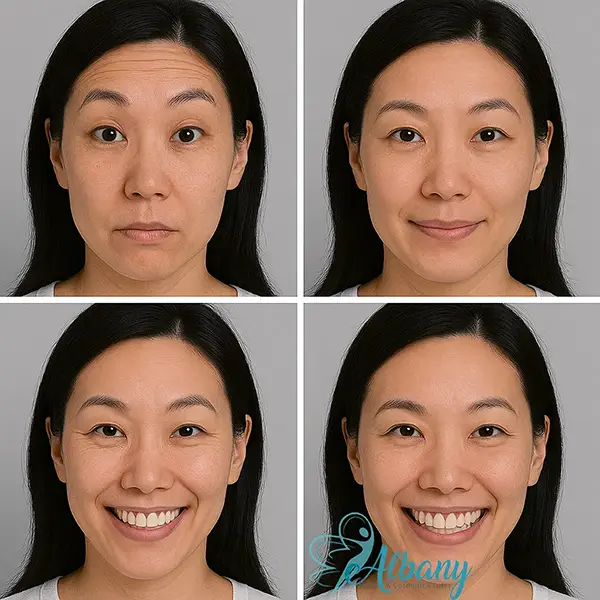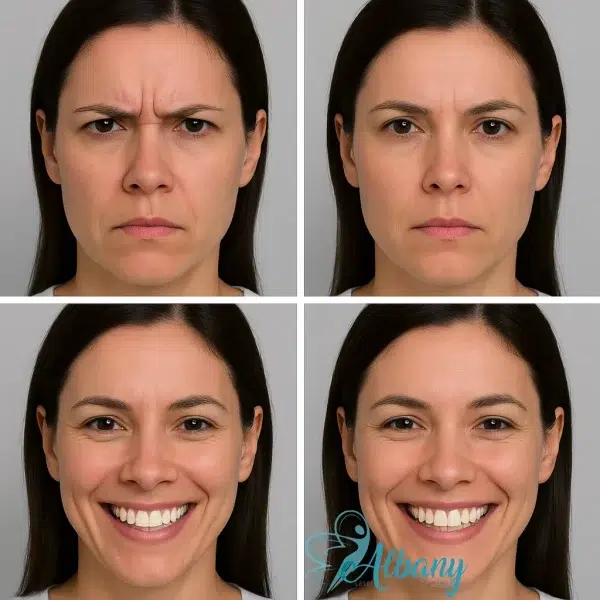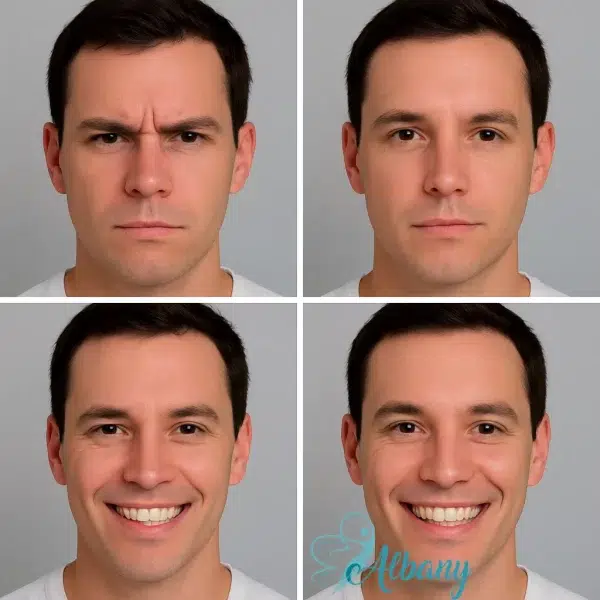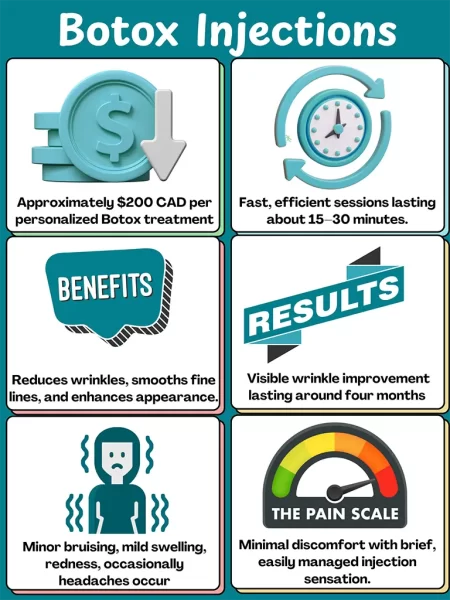Understanding Upper Face Expressive Muscles
The upper face is a dynamic area where expressive muscles play a crucial role in facial expressions and overall aesthetics. From smiling to frowning, these muscles continuously contract and relax, leading to the formation of lines and wrinkles over time. Understanding how these muscles work helps in effectively addressing signs of aging and enhancing facial harmony.
At Albany Cosmetic and Laser Centre in Edmonton, we specialize in treatments targeting the upper face’s expressive muscles to achieve a smoother, more youthful look while preserving natural expressions. Our approach combines advanced techniques and personalized care to deliver outstanding results.




Upper Face Expressive Muscles: Anatomy and Function
The primary expressive muscles in the upper face include:
- Frontalis Muscle: Responsible for raising the eyebrows, resulting in horizontal forehead lines or worry lines.
- Corrugator Supercilii Muscle: Involved in drawing the eyebrows together, creating vertical frown lines or glabellar lines between the eyebrows.
- Procerus Muscle: Contributes to horizontal lines at the top of the nose when frowning or concentrating.
- Orbicularis Oculi Muscle: Surrounds the eyes and is responsible for forming crow’s feet when smiling or squinting.
How These Muscles Affect Facial Aesthetics
Over time, repetitive muscle contractions in the upper face lead to the formation of dynamic wrinkles. As collagen and elastin production decreases with age, these lines become more pronounced and may appear even when the face is at rest. The most common areas affected include:
- Forehead Lines (Horizontal Lines)
- Glabellar Lines (Frown Lines or “11” Lines)
- Crow’s Feet (Lines around the eyes)
- Bunny Lines (Lines on the upper part of the nose)
Treatments for Upper Face Expressive Muscles
At our clinic, we offer a range of non-surgical treatments aimed at relaxing the expressive muscles of the upper face, including:
- Botox® and Dysport® and other neuromodulators that temporarily relax targeted muscles to reduce the appearance of fine lines and wrinkles.
- Dermal Fillers restore volume and enhance skin smoothness, particularly when lines become static.
- Combination Therapies: Addressing multiple areas of the upper face, such as forehead lines, glabellar lines, and crow’s feet, for harmonious results.
Benefits of Treating Upper Face Expressive Muscles
Targeting expressive muscles offers several aesthetic benefits, including:
- Smoother, rejuvenated appearance of the upper face.
- Reduced visibility of forehead lines, glabellar lines, and crow’s feet.
- Improved facial harmony by treating interconnected areas.
- Preservation of natural expressions through precise treatments.
what are Dynamic lines
Dynamic lines are wrinkles that form due to repetitive muscle movements and facial expressions, such as smiling, frowning, or raising the eyebrows. Commonly found on the forehead, between the eyebrows (and around the eyes, these lines are most visible when the facial muscles are actively contracting. As we age, the skin loses elasticity and collagen, making dynamic lines more pronounced and eventually leading to static wrinkles that remain even when the face is at rest. Treating dynamic lines effectively requires relaxing the underlying expressive muscles specific neuromodulator treatments for a smoother, more youthful appearance.
Request Your Appointment Today
Request your consultation today and discover how our treatment can refresh your appearance.
Call us at (587) 520‑2835 or use our online booking form to schedule an appointment.
Read our privacy policy here